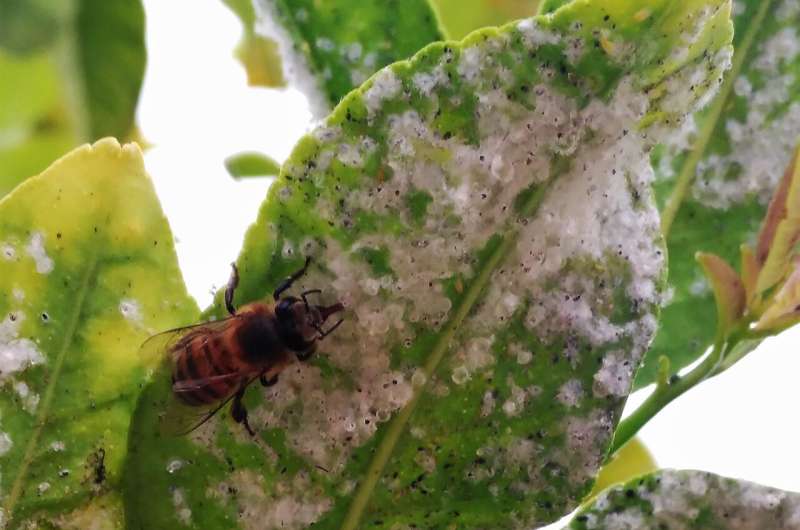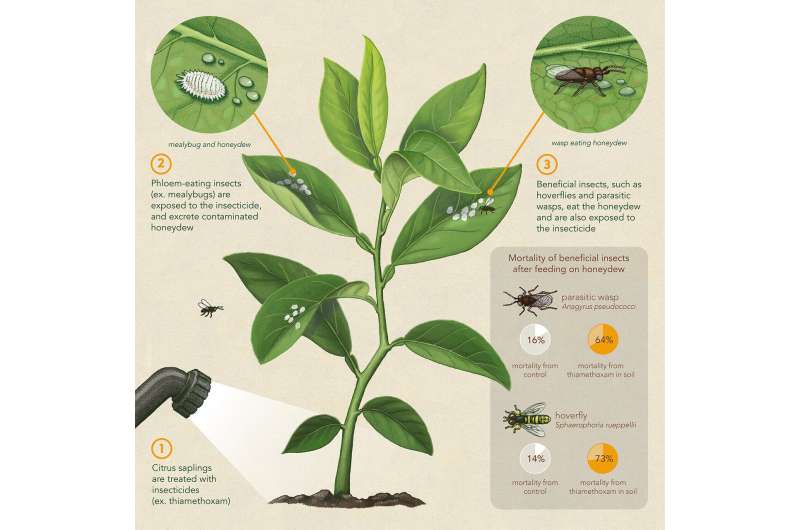August 6, 2019 report
Neonicotinoids may have an unexplored harmful exposure route to beneficial insects

A team of researchers affiliated with several institutions in Spain has found neonicotinoids represent an unexplored harmful exposure route to beneficial insects via honeydew. In their paper published in Proceedings of the National Academy of Sciences, the group describes their study of beneficial insect exposure to neonicotinoids and what they learned.
Prior research has shown that the application of neonicotinoids, a class of insecticides, to farm plants can harm beneficial insects via pollen. In this new effort, the researchers have found that it can also harm beneficial insects via honeydew.
Honeydew is a sticky liquid produced by insects such as mealybugs, aphids, psyllid and whiteflies, which feed on plant tissue containing sugars. The insects leave the honeydew on plants they visit, and other insects such as pollinating hoverflies and parasitic wasps come by and eat it. In this new effort, the researchers have found that neonicotinoids can wind up in the honeydew, which kills the insects that eat it. The problem is that the insects that consume the tainted honeydew and are killed by it are not the intended targets of the neonicotinoids, and include beneficial insects. The researchers made this discovery by applying neonicotinoids to test citrus trees, both directly as a spray and in water to the soil, and then collected honeydew made by citrus mealybugs that fed on them. The researchers then fed the honeydew to two types of beneficial insects—hoverflies and parasitic wasps.

The researchers report that a majority of the hoverflies and approximately half of the wasps died within three days of consuming the honeydew. In sharp contrast, only 6 to 15 percent of the hoverflies and wasps in a control group died within the same time frame. The researchers also took a closer look at the honeydew samples and found detectable levels of neonicotinoids in a significant fraction of them. Samples of honeydew from the control trees showed no signs of neonicotinoids.
The experiment results show that is possible that beneficial insects are being killed by eating honeydew contaminated with neonicotinoids, suggesting a new source of danger for them, according to the researchers.
More information: Miguel Calvo-Agudo et al. Neonicotinoids in excretion product of phloem-feeding insects kill beneficial insects, Proceedings of the National Academy of Sciences (2019). DOI: 10.1073/pnas.1904298116
Journal information: Proceedings of the National Academy of Sciences
© 2019 Science X Network



















